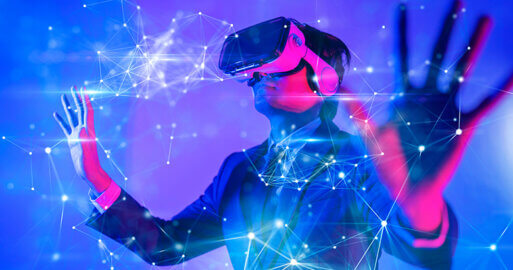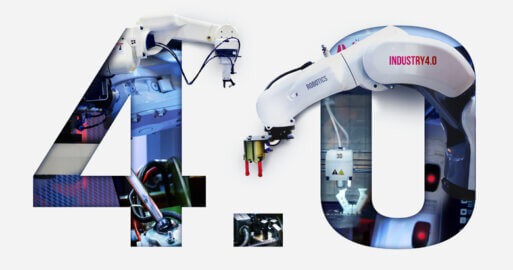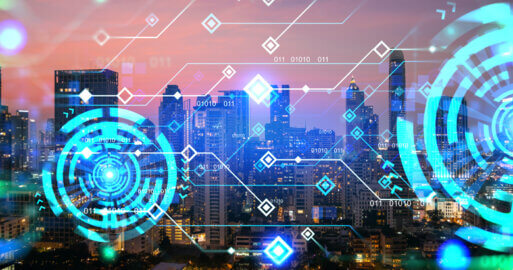5G in IIoT – The Future of Data Integration

As the direct successor to 4G, 5G refers to the fifth generation of mobile communications. Consumers can benefit from a significantly faster mobile network and a growing number of connected devices in everyday life.
However, understanding 5G only in the context of mobile communications falls far short of the mark. Thanks to its broad connectivity, 5G plays an important role especially in Industry 4.0 and the Industrial Internet of Things (IIoT) – smartphones are just one aspect of 5G network technology, which is aimed at the communication capabilities of things. It is becoming more prevalent in the industrial and service sectors, in the form of campus networks as well as in widespread expansion. Due to its low latency and high bandwidth, the technology will continue to establish itself as the standard in other areas, giving digitalization initiatives such as smart cities, smart factories, smart mobility, etc. a fresh boost. In this article, you will learn about the advantages, opportunities, application examples, risks and effects of 5G in IIoT.
5G in IIoT: benefits and opportunities
Compared to 4G, 5G promises up to 10 times higher speeds as well as a significant increase in capacity and reliability for data transmission. The use of the latest, fifth mobile communications standard opens up numerous new digital interaction spaces and use cases for companies, individuals and government administrations. 5G offers a correspondingly powerful data transmission technology both for mobile computing units, such as those available in smartphones, but also for edge devices on equipment in private and business environments. Thanks to non-public networks, so-called campus networks, companies and municipalities can specifically network their own areas with 5G and track, store, analyze and control the flow of their data.
Wireless connections are used wherever mobile end devices, such as non-stationary sensors, actuators, drones or even autonomous vehicles, need to be networked. These devices and their built-in computing and communication units (edge devices) often handle large amounts of data, for example through their sensors or actuators, and especially their networking. In these cases, networking via cables or other transmission technologies across several operating sites or over greater distances is out of the question. 5G networks, on the other hand, promise rapid installation and significantly cheaper setup and maintenance, which promotes the rapid introduction and implementation of the standard¹.
The biggest difference between 4G and 5G is the latency. Whereas 4G has latency times of 60-98ms, 5G offers latencies of less than 1ms. This drastic reduction not only enables higher download speeds, but is particularly necessary in control-relevant scenarios, such as in the area of automated guided vehicles (AGVs) for a smart factory or smart mobility, where real-time response times are essential.
5G is also important in the field of edge computing. Due to the short latency times and, in particular, the high data transmission rate, intelligent applications and devices can react to generated data almost immediately and interact with each other. This allows decentralized data processing, for example in robot-based systems for transport, handling or monitoring. 5G is also a key requirement in augmented reality/virtual reality, where the seamless experience through devices such as VR goggles depends on immediate data processing. In the form of edge cloud models and 5G networks, the networking of apps and services on the one hand and intelligent devices on the other creates entirely new ad-hoc interaction spaces, which are also a focus of research at SEEBURGER. These form the basis of future applications in IIoT, in which real and virtual data spaces of cyber-physical systems can merge in real time.
Potential applications of 5G in IIoT
The potential applications of 5G in IIoT are already diverse today and promise to create real added value as the technology matures. We present a few scenarios here as examples.
In traffic, 5G already plays an important role in the control of autonomous vehicles and in logistics. Modern autonomous vehicles have a computing power that in the past was only possible in data centers. Only 5G offers the necessary performance to ensure real-time communication of such data volumes. Thanks to drastically reduced latency, vehicles can also respond 10-100x faster than over previous mobile networks. In the real world, this can for example translate to a tenfold reduction in braking distance. Truly autonomous driving, in which the driver is only a passenger, is currently still a pipe dream. But even the kind of semi-autonomous driving that is already possible today helps to massively reduce the risk of accidents.
In the context of so-called smart mobility, 5G opens up the possibility of analyzing and controlling traffic situations in real time via intelligent traffic monitoring systems, traffic lights, radar and LIDAR systems. Transportation and traffic concepts that combine different modes of transport (multimodal) allow the most suitable mode of transport to be used in each case. Especially in the logistics sector, digitized traffic systems and vehicles networked via 5G enable the dynamic control of transports, taking into account all current traffic and weather conditions.
Smart Production/Smart Manufacturing enables manufacturing companies to add another level of permanent data acquisition and analysis to their production processes, for example via image processing. For example, mobile warehouses and versatile workstations can be used to optimize the flow of material with a view to reducing the carbon footprint or resource consumption. Additional sensors from the environment and surroundings, including the factory building as a smart factory application, can also be integrated for this purpose. Data analysis can be largely automated – for example, by using an AI-based solution. It can be used as a digital service via data glasses, for example for assisted maintenance of entire plants.
The term “smart city/region” describes the search for practical approaches for exploiting digitalization potential in cities, but especially in rural areas with poor infrastructure. The aim is to improve the quality of life by networking urban and rural areas with intelligent traffic and parking management concepts, comprehensive access to healthcare systems and efficient building technologies. In agriculture, 5G is already being used in “smart farming.” The aim is to optimize the sustainable management of farmland by bringing together all data-driven services between B2B partners and authorities. In the development of smart cities/regions, almost all areas of society, business and government can be involved: urban and regional development, mobility and logistics, agriculture and nutrition (precision farming), local supply, energy and water, infrastructure, health and care, housing management, administration and, last but not least, cyber security. For all the imaginable interactions, almost unimaginably large volumes of data need to be transmitted and networked in real time. The provision of 5G has brought IIoT projects of this scale into the realm of being technically feasible for the first time.
Data security risks in the 5G era
As with so many innovations, the bottleneck for 5G-based projects is not the technology. Rather, it is necessary to formulate new regulations that enable sovereign, competition-preserving interactions. The applicable provisions of the GDPR must be observed, which grant every person the right to self-determination over his or her own data. All personal and other data may only be stored or read out on devices if the users have expressly consented to this. This also means that they must be informed in advance. This applies to every device connected to a public communications network.
At the same time, however, data security, i.e., the technical protection of data, is of particular importance when setting up 5G networks. The relevant security criteria have been specified by the Federal Network Agency (BNetzA) in cooperation with the Federal Office for Information Security (BSI) and are significantly stricter than was the case with 3G and 4G. Among other things, they specify digital measures, such as suitable encryption technologies and authentication methods; but also physical protective measures designed to protect the integrated devices and sensors from security risks such as vandalism, theft, or elemental damage.
The digitalization scenarios that 5G will enable for the further shaping of IIoT and Industry 4.0 are in many ways still in their infancy. The opportunities, but also the associated challenges, cannot even be fully assessed at present. Much is still being developed or is undefined. One of the most important tasks ahead is therefore to further define security standards that are adapted to the evolving technology.
Impact of 5G on future B2B integration
The new interaction spaces still pose major challenges, especially for companies. Above all, the complexity of orchestrating the widely distributed integration nodes for data and service integration in existing systems, infrastructures and operating processes should not be underestimated. On the one hand, companies must prepare their business integration for digital twins and cloud-to-cloud scenarios or expand existing capabilities. New forms of micropayments or new micro-contracting models based on blockchain technology also come into play here. On the other hand, integration platforms must also be able to offer decentralized B2B integration from cloud to edge and back. Today, SEEBURGER R&D is already working on concrete solutions to ensure technological capability, but also mastery of core services in these new, end-to-end digital environments.
With the IIoT capabilities of the SEEBURGER BIS platform, companies can solve the integration tasks associated with their Industry 4.0 projects. Take advantage of the opportunities offered by the new 5G mobile communications standard in IIoT and Industry 4.0 and expand your integration and analysis capabilities to include new products, machines and actors in the real world. By converting old, proprietary interfaces into standard formats, you lay the foundation for state-of-the-art integration scenarios of all kinds.
Webcast-On-Demand
Watch our webcast to learn how companies can use the SEEBURGER BIS Platform to tap the potential of IIoT for their business processes.
Watch now¹ https://www.elektroniknet.de/automation/industrie-40-iot/5g-wird-zum-universellen-uebertragungsmedium.196411.html (retrieved on July 26, 2023).
Thank you for your message
We appreciate your interest in SEEBURGER
Get in contact with us:
Please enter details about your project in the message section so we can direct your inquiry to the right consultant.
Written by: Claudia Merklinger
Claudia studied English and Japanese studies in Heidelberg and Tokyo. In the SEEBURGER marketing team, she is responsible for blogs, whitepapers, social media texts and anything else to do with language. Before joining SEEBURGER in 2022, she worked as the head of a trade publishing house.





